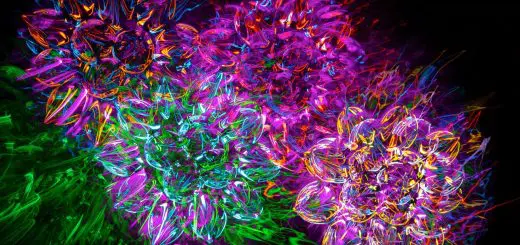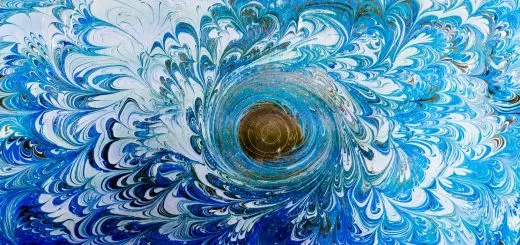Visconti-Sforza Tarot: A Historical Gem

Looking for more amazing products? Check out our online store and explore our collection here! Happy shopping!
Before diving in, please note: This post is for informational purposes only. If you’d like to know more about how we approach topics, feel free to check out our friendly Disclaimer Page.
Hey there, amazing readers! 
We’re committed to delivering quality posts, and your support (even just sticking around despite the ads) means everything to us. So, bear with us, and thanks for helping us keep the good vibes rolling. Now, on to the fun stuff!
TRANSLATE BUTTON AT THE END OF THE ARTICLE
A Quick Overview
The Visconti-Sforza Tarot is not just a set of cards; it’s a historical marvel that encapsulates the grandeur of Renaissance Italy.
Imagine holding in your hands a piece of art that dates back to the 15th century, serving as a window into a vibrant world of power, politics, and mysticism.
This deck is often considered the oldest surviving tarot deck, and it tells stories that go beyond mere fortune-telling.
It reflects an era rich with artistry, culture, and the intertwining of familial legacies.
Let’s dive into this fascinating treasure and uncover what makes the Visconti-Sforza Tarot so special.
Unveiling the Visconti-Sforza Tarot: A Historical Treasure
When we think about historical artifacts, we often picture dusty museums or fancy galleries.
But the Visconti-Sforza Tarot transports us to a lively Italian court where art flourished and political intrigue ran high.
This tarot deck is a historical gem, not just for its age but also for its artistry and the stories it carries.
Each card is like a time capsule, reflecting the values, beliefs, and social dynamics of its era.
Crafted in the 15th century, the Visconti-Sforza Tarot deck comprises 78 cards, although only 62 are known to have survived.
The surviving cards are beautifully illustrated, showcasing the mastery of their creators.
But these cards are more than just pretty pictures.
They represent a fusion of culture, showcasing how art and spirituality intertwined in the Renaissance period.
Imagine having a front-row seat to the birth of tarot as we know it today.
The Visconti-Sforza cards played a crucial role in the evolution of tarot, influencing future decks and shaping the way people view these cards.
They are a testament to the creativity and innovation of their time.
The Origins of the Visconti-Sforza Tarot Deck
The origins of the Visconti-Sforza Tarot are steeped in history.
The deck is attributed to the Visconti family of Milan, who ruled from the 13th to the 15th centuries.
It was later associated with the Sforza family, who took power after the Viscontis and continued the tradition of art and patronage.
The tarot deck was likely commissioned as a game for the nobility, reflecting their status and wealth.
The exact date of creation is still debated, but historians generally place it around the 1450s.
At that time, the art of playing cards was gaining popularity across Europe.
These cards were not just tools for divination but also served as a status symbol among the elite.
The Visconti-Sforza deck represents one of the earliest examples of this trend.
What really intrigues me is how these cards were crafted.
They were made from high-quality materials like silk and gold leaf, making them a luxurious item.
Each card was handcrafted, showcasing intricate designs that often included historical and mythological themes.
The artistry behind these cards is simply breathtaking.
Meet the Visconti and Sforza Families: A Brief Overview
The Visconti and Sforza families were influential players in Italian history.
The Viscontis were known for their ambitious rule and artistic patronage.
They were a powerful dynasty that controlled Milan and its surroundings for over two centuries.
Under their reign, Milan became a cultural hub, attracting artists, architects, and intellectuals.
Then came the Sforzas.
Francesco Sforza, a military leader, married Bianca Visconti, which brought the two families together.
The Sforzas continued the legacy of artistic patronage, commissioning works from renowned artists like Leonardo da Vinci and Michelangelo.
They transformed Milan into a center of the Renaissance, with the Visconti-Sforza Tarot deck being a reflection of that cultural explosion.
Both families played a crucial role in the development of urban life and culture during the Renaissance.
They were not just rulers; they were visionaries who understood the importance of art and culture in solidifying their power.
Their influence can still be felt today, and the Visconti-Sforza Tarot serves as a reminder of their legacy.
The Artistic Mastery Behind the Tarot Cards
The artistry of the Visconti-Sforza Tarot is a marvel in itself.
The cards were meticulously hand-painted by skilled artisans who were likely influenced by the prevailing styles of the time.
The use of vibrant colors, detailed imagery, and symbolic elements makes each card a work of art.
One striking feature is the symbolism embedded in each card.
For example, the major arcana features figures like The Fool, The Magician, and The High Priestess, each rich with meaning.
These images were not just decorative; they conveyed messages about life, morality, and human behavior.
The card backs are equally stunning, often adorned with elaborate designs that showcase the skill of the artists.
It’s intriguing to think about how these artists poured their hearts and souls into each piece, knowing that they would be cherished for centuries to come.
Interestingly, the Visconti-Sforza Tarot lacks the standardized structure seen in modern tarot decks.
The surviving cards don’t follow the typical 22 major arcana and 56 minor arcana division.
Instead, they include a mix of court cards and trumps, which adds to their mystery and allure.
How the Tarot Became a Symbol of Power and Prestige
Tarot cards were not just tools for divination; they became a symbol of status among the elite.
In Renaissance Italy, owning a beautifully crafted tarot deck was akin to owning a piece of art.
The Visconti-Sforza Tarot exemplifies this.
It was a way for the nobility to showcase their wealth and sophistication.
Playing tarot was a popular pastime in aristocratic circles.
It was often associated with intellectual pursuits and social gatherings.
The game transcended mere entertainment; it became a way to forge alliances, settle disputes, and explore philosophical ideas.
The elaborate designs of the Visconti-Sforza cards added an extra layer of prestige to these gatherings.
Moreover, the use of symbols in the cards lent them an air of mystique.
The nobility believed that these cards could provide insight into their futures and guide their decisions.
This belief only heightened their allure.
As a result, tarot cards became intertwined with the fabric of social life in Renaissance Italy.
Interestingly, the connection between tarot and power extended beyond the game.
The imagery and themes in the Visconti-Sforza deck often reflected the values and aspirations of the ruling class.
They served as a reminder of the divine right to rule and the responsibilities that came with it.
Exploring the Unique Cards of the Visconti-Sforza Deck
The Visconti-Sforza Tarot deck features cards that are rich in symbolism and history.
Each card tells a story, making them fascinating to explore.
For instance, the card representing The Emperor showcases a powerful figure seated on a throne, epitomizing authority and stability.
Another intriguing card is The Empress, which symbolizes fertility and abundance.
It’s fascinating to see how these archetypes have persisted throughout tarot history.
The high-quality illustrations and gold leaf details make these cards visually arresting.
One notable aspect of the Visconti-Sforza Tarot is the inclusion of court cards that are less common in modern decks.
These cards, representing different ranks within nobility, provide insight into the social structure of the time.
They can also serve as a reflection of personal traits and characteristics in a reading.
Additionally, some cards feature figures that are not typically found in modern tarot decks.
These unique representations offer a glimpse into the cultural influences of the Renaissance, showcasing historical figures and elements from mythology.
Each card is a journey through time and tradition.
Exploring the Visconti-Sforza Tarot is like stepping into a time machine.
The imagery invites us to think about how these themes resonate with our lives today.
They remind us of the universal struggles and triumphs of the human experience.
The Mystical Influence of Tarot in Renaissance Italy
Tarot’s role in Renaissance Italy was multifaceted.
It was not just a game; it became a tool for introspection and insight.
The Visconti-Sforza Tarot played a significant part in this.
During a time when people sought answers to existential questions, tarot offered a way to explore the unknown.
Mysticism was prevalent in Renaissance thought.
People were deeply interested in astrology, alchemy, and the mystical arts.
Tarot cards, with their rich symbolism, provided a means to tap into these interests.
The connection between the cards and the cosmos fascinated many, leading to a belief that the cards could reveal hidden truths.
Renaissance thinkers often viewed tarot as a means of divination.
The cards became a bridge between the material world and the spiritual realm.
People sought guidance in their personal lives, relationships, and even political matters.
The Visconti-Sforza Tarot, with its intricate designs, was a perfect fit for this purpose.
Interestingly, tarot readings were often conducted in social settings, providing an opportunity for communal exploration of the cards’ meanings.
This group dynamic added a layer of richness to the experience, fostering connections between people as they delved into their shared journeys.
Preservation Efforts: Safeguarding the Tarot Legacy
The Visconti-Sforza Tarot has not only survived but thrived due to concerted preservation efforts.
Various institutions, including museums and art historians, have worked diligently to safeguard this treasure.
They recognize the deck’s significance as a cultural artifact that documents a pivotal time in history.
Conservation techniques have advanced significantly over the years.
Experts use methods that respect the original materials and craftsmanship while ensuring the cards remain intact for future generations.
This dedication to preservation highlights the importance of maintaining our cultural heritage.
Additionally, there are now digital resources that allow broader access to the Visconti-Sforza Tarot.
High-quality photographs and virtual exhibits make it possible for anyone interested to explore these cards from the comfort of their homes.
This democratization of knowledge ensures that the legacy of the Visconti-Sforza Tarot continues to inspire.
Moreover, academic research on the deck has increased over the years.
Scholars delve into its historical, artistic, and cultural significance, enriching our understanding of its place in history.
This ongoing dialogue keeps the tarot alive, attracting new enthusiasts and collectors.
Modern Interpretations of the Visconti-Sforza Tarot
The Visconti-Sforza Tarot continues to inspire modern interpretations.
Many contemporary tarot readers and artists draw from its imagery, creating new decks that pay homage to this historical work.
This blending of old and new allows for a fresh perspective while honoring the original art.
Some tarot enthusiasts appreciate the Visconti-Sforza Tarot for its raw, unfiltered imagery.
Unlike many modern decks that may sugarcoat the meanings, these cards present a more direct portrayal of life’s complexities.
This authenticity resonates with many who seek a deeper understanding.
Moreover, the deck is often used in workshops and educational settings.
Many people are eager to learn about its history, artistry, and meanings.
By sharing the Visconti-Sforza Tarot with a new generation, we help keep the tradition alive and thriving.
Additionally, the cultural themes within the cards remain relevant.
Concepts of power, love, and morality still resonate with today’s audiences.
Many find that the messages within the cards can be applied to their lives, making them a source of guidance and reflection.
How to Read the Visconti-Sforza Tarot Cards Today
Reading the Visconti-Sforza Tarot cards today can be a rewarding experience.
While the deck may not follow the traditional structure of modern tarot, the meanings behind the cards remain powerful.
To get started, consider these steps:
Familiarize Yourself with the Cards: Spend time getting to know each card.
Observe the imagery, colors, and symbols.
Reflect on their meanings and how they relate to your life.
Set Your Intentions: Before a reading, focus on what you want to gain from the experience.
Whether it’s clarity on a decision or insight into your emotional state, setting intentions can guide your reading.
Choose a Spread: You can use a simple three-card spread for guidance or explore more complex layouts.
A basic spread might include past, present, and future positions.
Interpret the Cards: Look at the cards drawn and interpret their meanings.
Remember, intuition plays a significant role.
Trust your instincts and feelings about each card.
Reflect: After your reading, take time to reflect on the insights gained.
Journaling can help solidify your thoughts and track patterns over time.
The beauty of the Visconti-Sforza Tarot lies in its ability to resonate differently with each reader.
There’s no right or wrong way to interpret the cards, so embrace your unique approach.
The Tarot’s Cultural Impact Through the Centuries
The Visconti-Sforza Tarot has left an indelible mark on cultural history.
Its influence extends far beyond the decks that followed.
As tarot spread throughout Europe, it evolved, adapting to different cultures and artistic styles.
Each iteration carries echoes of the original Visconti-Sforza designs.
Throughout the centuries, tarot has been a source of fascination for many.
It has appeared in literature, art, and even popular culture.
Authors and artists often draw inspiration from its rich symbolism, highlighting its enduring appeal.
Moreover, the mystique surrounding tarot has led to its association with various movements, including the occult and esotericism.
This connection has further entrenched the Visconti-Sforza Tarot within broader cultural narratives.
Educational institutions and libraries have recognized the deck as a significant artifact worthy of study.
This academic interest ensures that the legacy of the Visconti-Sforza Tarot continues to be explored and appreciated.
Why the Visconti-Sforza Tarot Remains a Collectors’ Gem
The Visconti-Sforza Tarot continues to be a coveted treasure among collectors and enthusiasts.
Its historical significance and artistic beauty make it a standout in any collection.
Owning a piece of this deck is like possessing a fragment of history, a connection to a vibrant past.
Collectors appreciate the craftsmanship that went into creating each card.
The intricate designs and luxurious materials are a testament to the skill of the artisans.
This level of artistry is hard to find in contemporary decks, making the Visconti-Sforza Tarot particularly special.
Furthermore, the deck’s rarity adds to its allure.
With only a limited number of surviving cards, it’s a sought-after item.
Many collectors cherish the thrill of hunting for these cards, each one a unique addition to their collections.
The Visconti-Sforza Tarot is not just a collector’s item; it’s also a conversation starter.
Sharing stories about its history, artistry, and significance can spark engaging discussions among enthusiasts and newcomers alike.
In summary, the Visconti-Sforza Tarot is a historical treasure that continues to captivate our imaginations.
Its rich legacy, beautiful artistry, and enduring relevance make it a gem worth exploring.
Conclusion
In exploring the Visconti-Sforza Tarot, we’ve uncovered a rich tapestry of history, art, and culture.
This deck is more than just a set of cards; it’s a reflection of an era where art and mysticism coalesced in the vibrant courts of Renaissance Italy.
As we continue to engage with its mysteries, we ensure that this historical treasure remains alive for generations to come.
Whether you are a seasoned tarot reader or a curious newcomer, the Visconti-Sforza Tarot invites you on a journey through time, offering insights and reflections that resonate with our human experience.
So, why not dive in and discover what these cards have to say to you?

The Enlightenment Journey is a remarkable collection of writings authored by a distinguished group of experts in the fields of spirituality, new age, and esoteric knowledge.
This anthology features a diverse assembly of well-experienced authors who bring their profound insights and credible perspectives to the forefront.
Each contributor possesses a wealth of knowledge and wisdom, making them authorities in their respective domains.
Together, they offer readers a transformative journey into the realms of spiritual growth, self-discovery, and esoteric enlightenment.
The Enlightenment Journey is a testament to the collective expertise of these luminaries, providing readers with a rich tapestry of ideas and information to illuminate their spiritual path.
Our Diverse Expertise
While our primary focus is on spirituality and esotericism, we are equally passionate about exploring a wide range of other topics and niches 

To ensure we provide the most accurate and valuable insights, we collaborate with trusted experts in their respective domains 
Our blog originally focused on spirituality and metaphysics, but we’ve since expanded to cover a wide range of niches. Don’t worry—we continue to publish a lot of articles on spirituality! Frequently visit our blog to explore our diverse content and stay tuned for more insightful reads.
Hey there, amazing reader! 
Check out our store here and take a peek at some of our featured products below! Thanks for being awesome!










